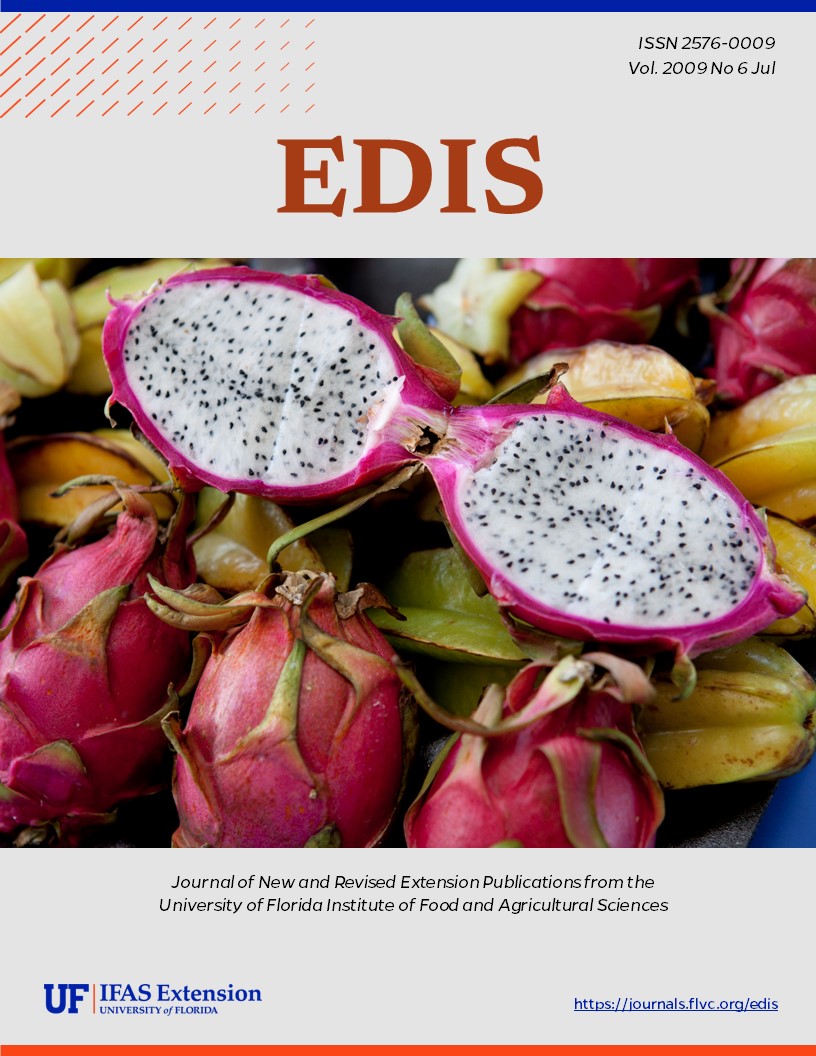Abstract
This article offers guidance for Florida farmers and growers in the selection of woody species for windbreaks, highlighting attributes that align with sustainable agricultural practices.
References
Andreu, M. G., B. Tamang, M. H. Friedman, and D. L. Rockwood. 2008. “The Benefits of Windbreaks for Florida Growers: FOR192/FR253, 7/2008”. EDIS 2008 (6). Gainesville, FL. https://doi.org/10.32473/edis-fr253-2008.
Burns, R.M. and Barbara H. Honkala (Technical Coordinators). 1990. Silvics of North America: 1. Conifers; 2. Hardwoods. Agriculture Handbook 654.
Castle, W. S. 2008. “Casuarina Cunninghamiana Miq. (River Sheoak) in Florida and Its Potential As a Windbreak Plant for Citrus Groves: HS1139/HS392, 5/2008”. EDIS 2008 (5). Gainesville, FL. https://doi.org/10.32473/edis-hs392-2008.
Florida Invasive Species Council, https://www.floridainvasives.org/. Accessed October 16, 2024.
U.S. Department of Agriculture, Forest Service. 1990. Silvics of North America. Agricultural Handbook 654. Washington, DC, https://www.srs.fs.usda.gov/pubs/misc/ag_654/table_of_contents.htm. Accessed October 16, 2024.
USDA, NRCS. 2009. The PLANTS Database https://plants.usda.gov. National Plant Data Center, Baton Rouge, LA. Accessed October 16, 2024.
Wunderlin, R.P. and B.F. Hansen. 2008. Atlas of Florida Vascular Plants https://www.plantatlas.usf.edu/.[S. M. Landry and K. N. Campbell (application development), Florida Center for Community Design and Research.] Institute for Systematic Botany, University of South Florida, Tampa, FL.

This work is licensed under a Creative Commons Attribution-NonCommercial-NoDerivatives 4.0 International License.
Copyright (c) 2009 UF/IFAS

